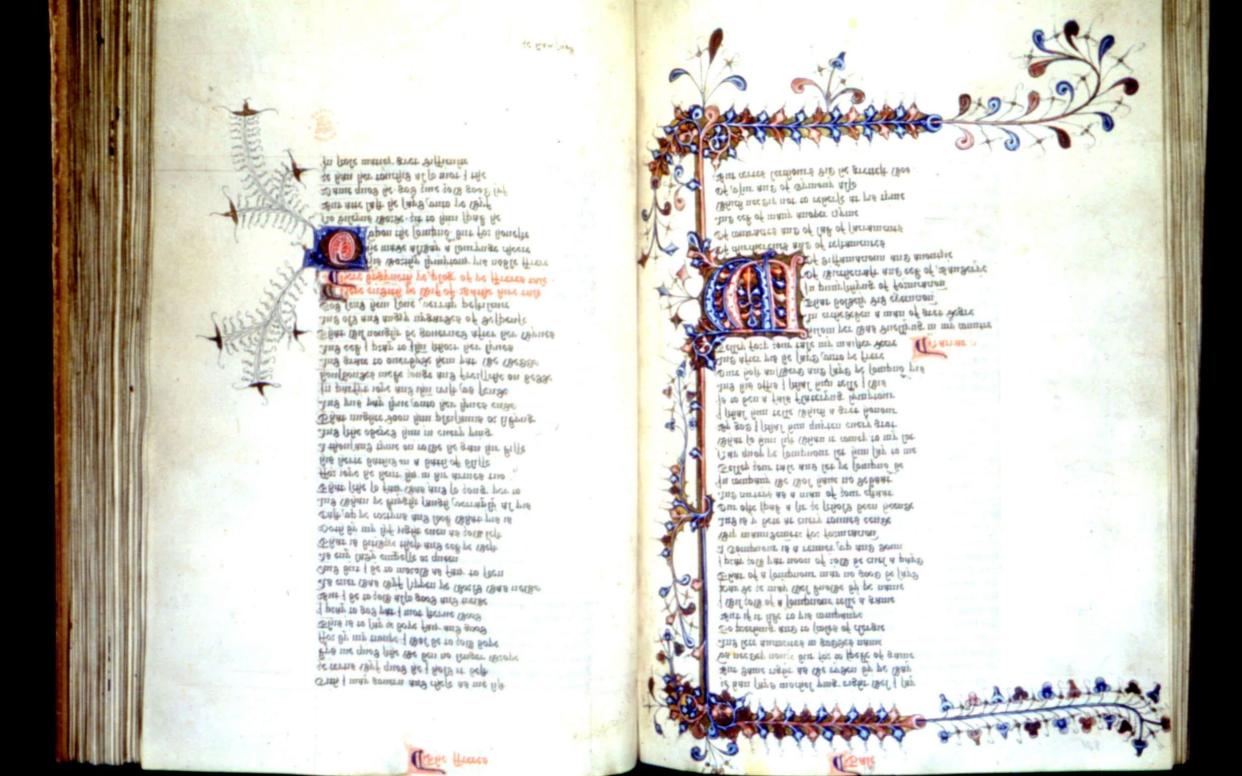Exclusive: Canterbury Tales manuscript could be relabelled to reflect past owners' slave trade links

- Oops!Something went wrong.Please try again later.
- Oops!Something went wrong.Please try again later.
The Canterbury Tales could be relabelled by the British Library to include references to previous manuscript owners' links to the slave trade.
The library will amend labels in its public-facing collection of priceless literary artefacts as part of an anti-racism project launched following the Black Lives Matter protests, according to internal documents.
New information for all 210 items in the Treasures collection – which also holds Shakespeare's First Folio – will explain how each item was acquired, staying whether they were "taken, captured, seized, looted" or otherwise obtained.
Geoffrey Chaucer's manuscript of The Canterbury Tales is included in the collection and is one of those to be relabelled. Despite being written between 1387 and 1400, more than a century before the Portuguese first began the transatlantic slave trade, the manuscript's new label could reference slavery.
The document was at one point owned by the Harley family, who derived wealth from the slave-trading South Sea Company created by the 18th-century treasurer Robert Harley, before it was purchased for the British Library's collection.
This link to colonialism and the slave trade could be included as part of the British Library's plan to "tell a clearer history of how works were acquired". Plans seen by The Telegraph say "it is unclear to visitors when works were acquired and in what context", and the library should add "accurate and transparent provenance information" to all objects in the Treasures collection.
Shakespeare's First Folio, the primary source for many of his dramatic works, could also be relabelled to reflect its colonial connections. The 17th-century document was owned by South Sea Company governors Kings George III and George IV, both opponents of abolition, before being gifted to the British Museum.
Other items from the slavery-linked Harley Collection, which ultimately formed the basis of the British Library's current collection along with that of Sir Hans Sloane, could be highlighted for their links to slave weatlth.
The collection funded by Harley wealth includes a record of the Tilbury Speech supposedly given by Eliabeth I in defiance of the Spanish Armada, and the personal prayer book of Lady Jane Grey, who was queen for nine days before being deposed and executed.
Other priceless documents connected to the colonialist family include the Golden Gospels, which were written entirely in gold in the ninth Century court of Holy Roman Emperor Charlemagne.
Numerous objects such as the Indian Mewar Ramayana and Kaifeng Torah Scroll, made by the Jewish community in China, could be relabelled to reflect that they were acquired through missionaries, soldiers, or officials at the height of the British Empire.
Dr Zareer Masani, a historian of India and the British Raj, warned: "Seeing and relabelling everything through the prism of slavery or empire risks distracting viewers from the main relevance and importance of particular objects.
"When we see treasures like The Canterbury Tales or the First Folio of Shakespeare, what we need most is their literary context, not some tenuous connection with a long-past empire."
The British Library has conceded that some objects will require more information than others, and staff planning the project – due to finish in the summer – stressed that "the majority of Treasures items do not have contentious histories".
A spokesman for the institution said: "All Treasures labelling is amended to include a brief line about acquisition and provenance at the end of each label, explaining when and where it was acquired for the national collection."

